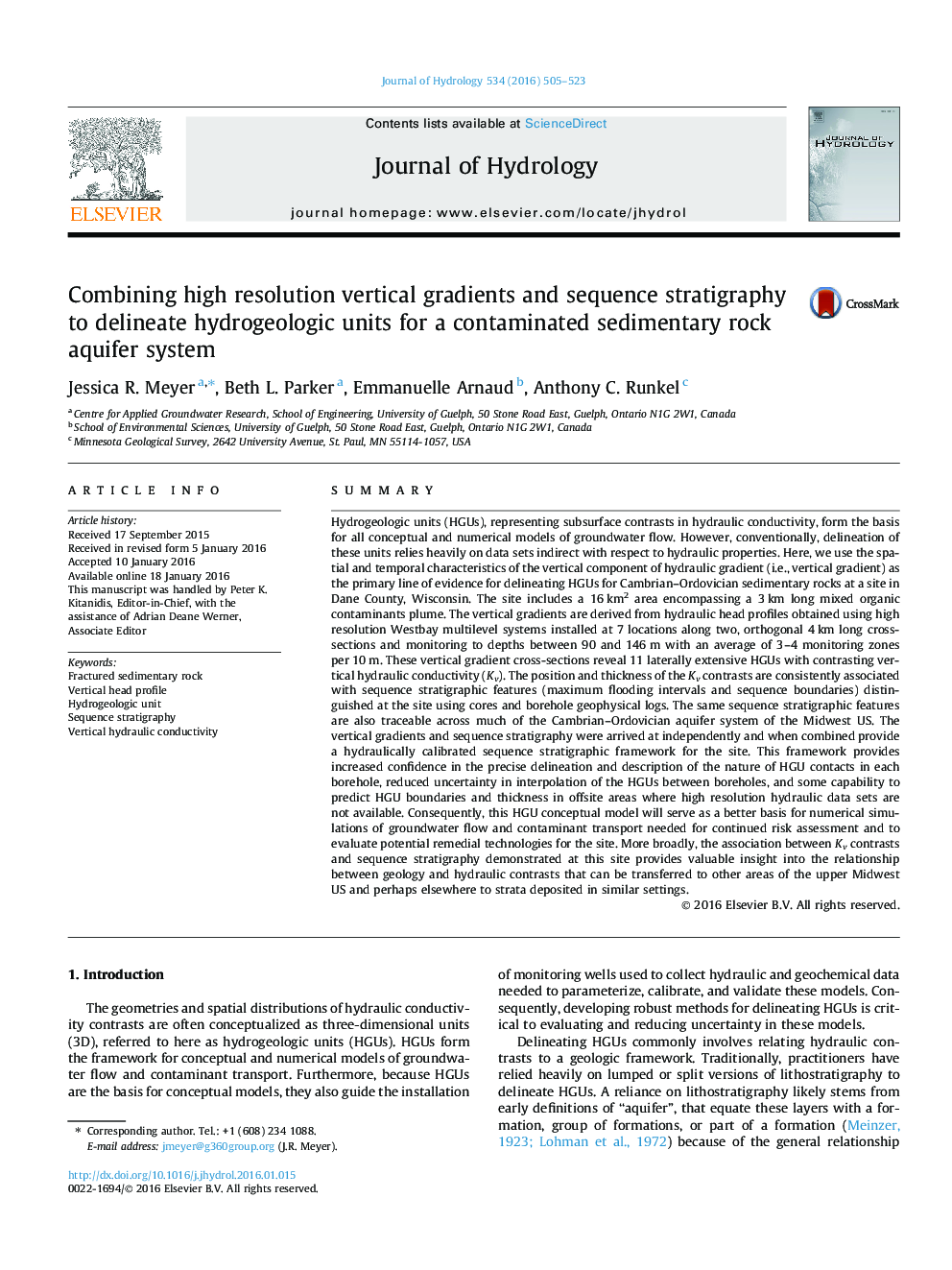| Article ID | Journal | Published Year | Pages | File Type |
|---|---|---|---|---|
| 6410377 | Journal of Hydrology | 2016 | 19 Pages |
â¢Collected 7 high resolution head profiles from a sedimentary rock aquifer system.â¢Vertical gradients from head profiles indicate laterally extensive contrasts in Kv.â¢Distribution of Kv contrasts strongly associated with sequence stratigraphic units.â¢Combining these datasets provides a hydraulically calibrated geologic framework.â¢Framework supports robust delineation of hydrogeologic units for a numerical model.
SummaryHydrogeologic units (HGUs), representing subsurface contrasts in hydraulic conductivity, form the basis for all conceptual and numerical models of groundwater flow. However, conventionally, delineation of these units relies heavily on data sets indirect with respect to hydraulic properties. Here, we use the spatial and temporal characteristics of the vertical component of hydraulic gradient (i.e., vertical gradient) as the primary line of evidence for delineating HGUs for Cambrian-Ordovician sedimentary rocks at a site in Dane County, Wisconsin. The site includes a 16Â km2 area encompassing a 3Â km long mixed organic contaminants plume. The vertical gradients are derived from hydraulic head profiles obtained using high resolution Westbay multilevel systems installed at 7 locations along two, orthogonal 4Â km long cross-sections and monitoring to depths between 90 and 146Â m with an average of 3-4 monitoring zones per 10Â m. These vertical gradient cross-sections reveal 11 laterally extensive HGUs with contrasting vertical hydraulic conductivity (Kv). The position and thickness of the Kv contrasts are consistently associated with sequence stratigraphic features (maximum flooding intervals and sequence boundaries) distinguished at the site using cores and borehole geophysical logs. The same sequence stratigraphic features are also traceable across much of the Cambrian-Ordovician aquifer system of the Midwest US. The vertical gradients and sequence stratigraphy were arrived at independently and when combined provide a hydraulically calibrated sequence stratigraphic framework for the site. This framework provides increased confidence in the precise delineation and description of the nature of HGU contacts in each borehole, reduced uncertainty in interpolation of the HGUs between boreholes, and some capability to predict HGU boundaries and thickness in offsite areas where high resolution hydraulic data sets are not available. Consequently, this HGU conceptual model will serve as a better basis for numerical simulations of groundwater flow and contaminant transport needed for continued risk assessment and to evaluate potential remedial technologies for the site. More broadly, the association between Kv contrasts and sequence stratigraphy demonstrated at this site provides valuable insight into the relationship between geology and hydraulic contrasts that can be transferred to other areas of the upper Midwest US and perhaps elsewhere to strata deposited in similar settings.
Graphical abstractDownload high-res image (425KB)Download full-size image
